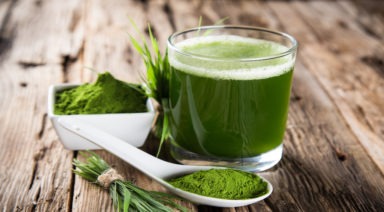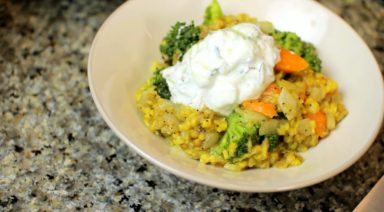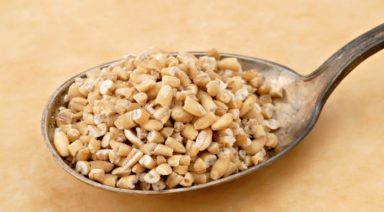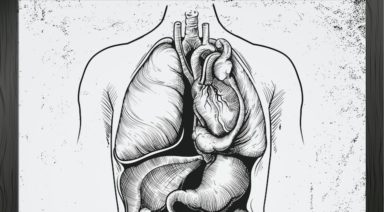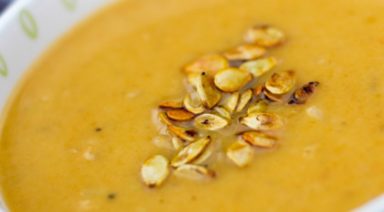Why Am I Starving So Early After Breakfast

Every morning I eat my breakfast of organic whole grain cereal, skim milk and blueberries. I’m trying to be healthy, but when I get to work an hour later I’m already starving. I feel like I have such a big appetite! What can I do?
First I want to say that what you are experiencing is extremely common. I would say that the majority of my nutrition clients come to me with this exact issue. And I understand why – eating a breakfast of organic cereal, skim milk, and blueberries seems like the “perfect” healthy breakfast straight out of all the diet books and magazines.
But often this meal leaves us with a blood sugar spike – a fast rise in blood sugar that falls quickly and leaves us feeling hungry soon after. This situation is the common paradox that occurs when we try to eat healthy: FIRST we change our breakfast to one with “healthier” ingredients. BUT because these “healthier” ingredients are missing some important components, we feel unsatisfied soon after eating. THEN we end up eating more than usual. And EVENTUALLY we feel guilty for being “a person with a big appetite”. How does this happen?
Let’s take a closer look at the breakfast…
-
Organic Whole Grain Cereal = A complex carbohydrate with fiber – often has added sugar (cane sugar is just another name for sugar) which is a simple carbohydrate.
-
Skim Milk = A simple carbohydrate with the fat removed.
-
Blueberries = A simple carbohydrate (with an abundance of antioxidants).
What we have here are a lot of carbohydrates. Energy-providing and essential to the functioning of the body, carbohydrates are made of sugar. When sugar enters the body it eventually reaches the blood stream thereby causing a rise in blood sugar. Now a rise in blood sugar is not a bad thing – it is what gives energy to the body. It is when blood sugar rises too fast that is becomes a problem. Refined sugars, such as white sugar and brown sugar, cause the biggest spike. Simple sugars, such as those in honey and fruit, are next on the list, and complex carbs, such as whole grains, are last because their linked sugars take time to break down.
What can you do to slow down the rise of blood sugar? How can you feel satisfied for longer after a meal? Three words: fiber, fat, and protein. These three magic nutrients are the answer. Let’s take a closer look at the breakfast and see what can be done to add these three so it lasts longer…
-
Organic Whole Grain Cereal:
- Contains fiber so will help
- Some have sugar added so look for cereals that do not have “cane sugar”, “cane juice”, “organic cane sugar”
- OR cook your own hot cereal using whole grains such as oats, amaranth, or millet (have a lot of fiber and are not refined or processed)
- Or consider eating eggs when you really need your meal to last (contain fat and protein)
-
Skim Milk:
- Made of simple sugars with the fat removed
- An excellent alternative is a plain, whole fat (as nature intended), non-homogenized yogurt – the fat will help slow down the release of the simple sugars AND the yogurt will provide probiotics to help your digestion
-
Blueberries
- A fantastic source of antioxidants and fiber
- I wouldn’t change a thing here BUT I would consider adding one of the following ingredients to help the meal be even more satisfying:
- Almonds, hazelnuts, walnuts, or pecans
- Flax, hemp or pumpkin seeds
- Coconut flakes
Do not be afraid of adding fat, protein and fiber to your diet. In the end, if you listen to your body’s hunger signals and eat when you’re hungry and finish when you’re satisfied, you will end up eating less – and enjoy the process much more along the way!
Now is the Time for an Ayurvedic Spring Cleanse

Spring has been shown to be the best time for a cleanse, which may just be the best action you can take for your health today. The ancient science of Ayurveda provides a safe, evidence-based, and comprehensive way to do it.
Cleansing, or detoxing the body, has been a key practice throughout the 5,000 years of Ayurveda’s history as a system of natural healing. Now, research explains the impressive results of the Ayurvedic cleanse.
Dr. John Douillard is a leading Ayurvedic practitioner who has been incorporating Ayurvedic detox programs in his practice for decades. He explains that poor digestion is at the core of the need for detoxification.
“I think most people don’t realize that our ability to digest well is directly linked to our ability to detoxify well,” Doulliard said. “In one survey, [it was] reported that 74 percent of the American population have a digestive imbalance of some kind, suggesting that not only are we not getting the nutrition that we need, but we’re also not getting the waste out as efficiently as we could — and there are waste, toxins, and pollutants everywhere. So, even if you eat really clean, which is obviously a really important thing, you’re still being exposed to toxicity, which means that you have to be able to digest well to detoxify that. That’s why Ayurveda is all about making sure with every change of the season, we do our best to reset — a deep rejuvenation to repair the digestion and detox organs and pathways. They’re actually creating a whole new population of bugs in your gut that are based on this year’s model, which gives you the stability and immunity for the entire year.”
Given these compelling reasons, what are the best indicators to notice if it’s time for you to do a cleanse?
“How is your digestion? Do you have a food intolerance? When you look at your tongue in the morning, if it’s white or coated, Ayurveda calls it ‘ama’ or undigested food. When you’re toxic, you’re tired, and not getting the energy from the lymph delivery of fat — your immune system is compromised and you can’t take the trash out, so it starts coming out through your skin. This gives you brain fog, headaches, rashes, indigestion; all these things begin to happen,” Douillard said.




